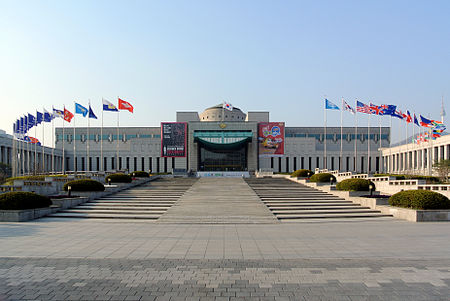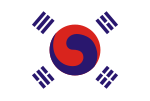War Memorial of Korea
Buildings and structures in Yongsan DistrictKorean War memorials and cemeteriesKorean War museumsMilitary and war museums in South KoreaMilitary monuments and memorials ... and 3 more
Monuments and memorials in South KoreaMuseums in SeoulTourist attractions in Seoul

The War Memorial of Korea is a museum located in Yongsan-dong, Yongsan-gu, Seoul, South Korea. It opened in 1994 on the former site of the army headquarters to exhibit and memorialize the military history of Korea. It was built for the purpose of preventing war through lessons from the Korean War and for the hoped for peaceful reunification of North and South Korea. The memorial building has six indoor exhibition rooms and an outdoor exhibition centre displaying war memorabilia and military equipment from China, South Korea and the United States.
Excerpt from the Wikipedia article War Memorial of Korea (License: CC BY-SA 3.0, Authors, Images).War Memorial of Korea
Itaewon-ro, Seoul Hangangno-dong
Geographical coordinates (GPS) Address Phone number Website External links Nearby Places Show on map
Geographical coordinates (GPS)
| Latitude | Longitude |
|---|---|
| N 37.5365 ° | E 126.9771 ° |
Address
전쟁기념관
Itaewon-ro 29
04353 Seoul, Hangangno-dong
South Korea
Open on Google Maps







